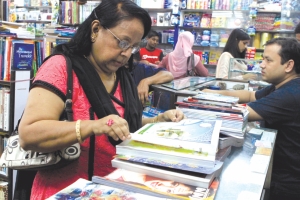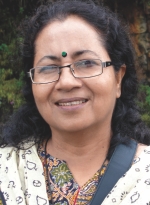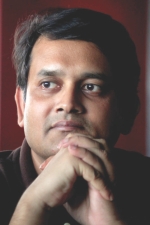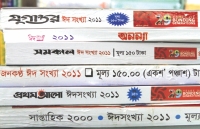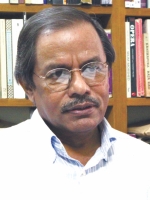| Home - Back Issues - The Team - Contact Us |
 |
| Volume 10 |Issue 33 | August 26, 2011 | |
|
|
Literature Awaiting the Special Eid Issues Rifat Munim
For most people, Eid is about having fun on the biggest festival by getting together with family and friends. For the younger ones, it is about going places and roaming around in search of some harmless adventures. However, for some it is significant for an entirely different reason. In fact, there are but a few readers of Bengali literature who in their teens had not awaited the publication of the giant Eid issues containing a plethora of fiction and non-fiction literary items. The first remarkable thing about those voluminous publications was that they put together almost all literary genres along with scholarly articles on culture and history. Secondly, most of those items offered the most potential creative and critical works by the leading as well as promising authors of our country. “I used to eagerly wait for the Eid issues in my youth. In the mid-1980s not every newspaper had a literary supplement. Books were also scarce. So the special Eid issues always attracted us with their voluminous reading material including translation,” expresses Ahmad Mostofa Kamal, who has several novels and volumes of short stories to his credit.
Begum was the first magazine which initiated the trend of bringing out special Eid issues in this part of Bengal in the pre-independence period. However, Begum featured literature written only by women. It was in the early 1970s that Bichitra, the most popular news weekly for several decades, embarked on the scene and introduced readers to the taste of an all-encompassing Eid issue consisting of novels, short stories, poems, essays, literary criticism, autobiography and theoretically enthused pieces written both by male and female authors. Gradually, other weekly and monthly magazines such as Robbar (Sunday), Chitrali, Shandhani and Purbani made their marks in bringing out identical issues featuring exclusive fiction and non-fiction materials. Even today, if one browses through a dust-covered old collection of Eid issues from the late 1970s and 1980s, one would be taken by surprise to see that all the major writers in those decades explored and manifested themselves in the pages of those issues with the best of their works. Needless to say, those issues have had a certain impact on later generations of writers. Shaheen Akhtar, whose novel Talash has recently been translated and published by Zubaan (a Delhi based Publishing house), says that it was towards the end of her school years in the late seventies that she used to avidly read the special Eid issues. “I used to read fiction, especially novels, from the Eid issues very seriously. I can still remember reading Selina Hossain's Hangar Nadi Grenade and some novels by Shawkat Ali.” Ahmad Mostofa Kamal says, “I've read most of the excellent novels by our leading writers from the Eid issues. Say, for example, all the outstanding works by Mahmudul Haque including Kalo Borof and Jibon Amar Bon; most of the works by Shawkat Ali, and also a good number of the works by Syed Shamsul Haque and Humayun Ahmed.” Seasoned author Syed Manzoorul Islam says, “When we were young, we had only the Begum magazine. It was at a much later period that other magazines came forward to do the same. Still, I remember a lot of commendable works from the Eid issues of Begum.”
So in the beginning there were only a handful of magazines that set the trend and there were no dailies that came up with a similar project. However, over the last 40 years, the trend of publishing special literary issues on the occasion of Eid has grown enormously. Now, not only the famous weekly and monthly magazines such as Saptahik 2000 and Kali O Kalam, but also almost all the leading Bengali dailies bring out voluminous Eid issues. When this reporter visited some of the paper stands at Farm Gate, Asad Gate and Shahbag areas, no less than 15 Eid Issues were found most of which, now available in the market, are brought out by the Bengali dailies including Prothom Alo, Shamakal, Jugantor, Kaler Kantho, Destiny, Amar Desh and Naya Diganta. As the number of publications has increased, a competition has naturally set in among the magazines and daily newspapers. As a result, most editors of the Eid issues vie to collect materials from the pre-eminent authors. While some consciously refuse to meet so many requests, most others produce fiction and other write-ups copiously to cope with the editors' requests. So the quantitative change has also met with a qualitative change for the worse. Syed Manzoorul Islam thinks that many substandard writings, especially fiction, are incorporated in the Eid specials as a result of tremendous pressure from the editors. “Many writers churn out a novel even though there was not a well-developed plot for the story.”
“These days there are writers who write under the pressure of meeting the deadline. So naturally, readers are not getting quality fiction. This is happening not only in case of promising or mediocre writers, but also in case of the seasoned authors. This is one of the reasons why I don't feel like reading the Eid issues nowadays,” expresses Shaheen Akhtar. “As for me, I cannot write under pressure. In fact, I need a lot of free space that I think is restrained when a deadline is set,” she adds. Be that as it may, the hefty Eid Special issues have become an integral part of the present literary scene in Bangladesh not least because of its easy accessibility. Furthermore, most of the top-notch novels that will be featured in the next book fair get published in these issues creating a bridge between readers and authors. If literary works are considered a product in the existing relations of production, then the month of Ramadan comes with the biggest business opportunity for the owners of dailies and weeklies. Seen from this perspective, while publishers make lakhs of money out of the Eid specials, authors are given only a meagre amount. “We know that publishers of Eid specials are constrained by limited sales, yet I think writers can be dealt with in a much better way. Only on rare occasions, are they paid off timely and properly. In most other cases, they are paid either poorly or untimely,” says Islam. Kamal says that the real situation is very bad. “Except for one or two newspapers, most others are indifferent about paying royalties. In most cases, one has to pursue the editors, which is very embarrassing. So there is no way that an author gets the money before Eid. Of course, two or three highly popular authors receive their payment much before the issue comes out. However, in other cases, if you don't pursue, you don't get the money.”
The profit that any newspaper or magazine makes out of Eid special issues, usually ranges between 15 and 30 lakh, informs a source working at one of the leading Bengali dailies. Taking the amount of profit and the poor royalties of the authors into consideration, it can be inferred that it is a bad business for the authors even though the business is predicated solely upon their creative and critical works. As the demand for Eid specials is on the rise, the business surrounding the special Eid issues will further evolve, attracting more readers, more writers and above all, more advertisements for the newspaper publishers. But there is no gainsaying the fact that authors are at the centre of this booming literary business. Although there are many workers involved in the whole process of producing an issue, nothing will ever come out if the writers refuse to send in their writings. So despite all the restraints of limited sales, authors must be ensured their rights and given their royalties timely and properly.
Copyright
(R) thedailystar.net 2011 |
